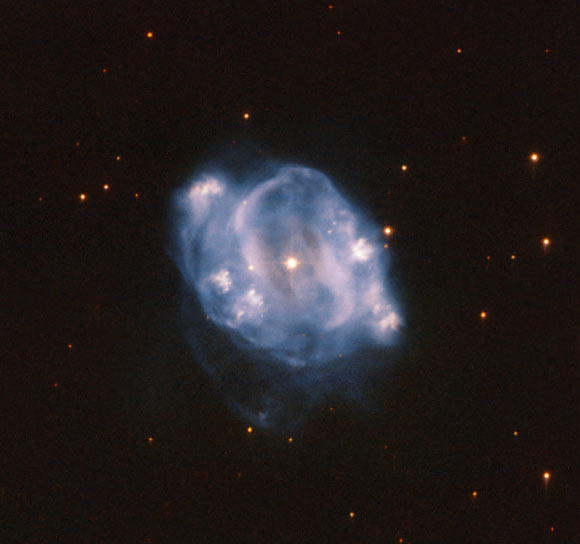Hubble Space Telescope Observes NGC 5307 | Astronomy – Sci-News.com
The NASA/ESA Hubble Space Telescope has produced a spectacular image of a planetary nebula called NGC 5307.

This Hubble image shows the planetary nebula NGC 5307. The color image was made from separate exposures taken in the visible and near-infrared regions of the spectrum with Hubble’s Advanced Camera for Surveys (ACS). It is based on data obtained through two filters. The color results from assigning different hues to each monochromatic image associated with an individual filter. Image credit: NASA / ESA / Hubble / R. Wade et al.
NGC 5307 is located 10,551 light-years from Earth in the southern hemisphere constellation of Centaurus.
Also known as ESO 221-11 or Hen 2-98, this planetary nebula was discovered by the English astronomer John Herschel on April 15, 1836.
“Planetary nebulae like NGC 5307 are the final stage of a Sun-like star,” Hubble astronomers said.
“As such, these objects allow us a glimpse into the future of our own Solar System.”
“A star like our Sun will, at the end of its life, transform into a red giant.”
Stars are sustained by the nuclear fusion that occurs in their core, which creates energy.
This process constantly tries to rip the star apart. Only the gravity of the star prevents this from happening.
“At the end of the red giant phase of a star, these forces become unbalanced,” the researchers explained.
“Without enough energy created by fusion, the core of the star collapses in on itself, while the surface layers are ejected outward.”
“After that, all that remains of the star is what we see here: glowing outer layers surrounding a white dwarf star, the remnants of the red giant star’s core.”
“This isn’t the end of this star’s evolution though — those outer layers are still moving and cooling.”
“In just a few thousand years they will have dissipated, and all that will be left to see is the dimly glowing white dwarf.”





